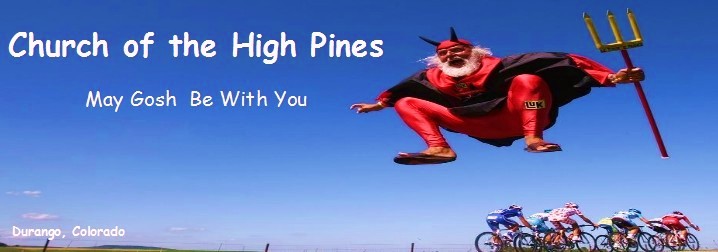Paceline Protocol
By: Coach Steve Ilg
The essence of group road cycling is riding “paceline.” For decades i’ve loved what happens when i am in a Club Ride or in a race and the chosen or evolved Leader of the group (sometimes even myself!) puts his hand up in the air in swirly-q motion which means to all the riders, “Okay guys, let’s paceline!” Pacelining allows cyclists to travel at least 30% faster with less effort while providing a scintillating social experience for new riders and the seasoned cyclists equivalent to ‘aerobic therapy.’ Also, pacelining is a foundation of racing. Like everything in life that is genuinely worthwhile, pacelines do have some inherent danger. They require basic cycling skills and communication among the riders. However, a well-working, harmonious paceline is perhaps the most wonderful thing about road cycling…it kinda feels like to me like synchronized telemarking on pavement…here’s how to do it with illustration:
z
Types of Pacelines:
Single Double Rotating Echelon
TYPES OF PACELINESTypesz
z
The SINGLE paceline is simple. Riders align behind one another to take maximum advantage of the “drag” effect of the cyclists to the front. The cyclist in the front will set the group’s pace, when the lead rider decides it is time to change, that rider pulls off to one side and drifts ALL THE WAY back to the end of the paceline.
z
The next and thus new lead cyclist does NOT ACCELERATE yet maintains the group pace. Veteran road cyclists are known to give a ‘surging’ rider a heccuva tongue lashing for accelerating at the front because a mature paceline is as smoothly running as a Swiss clock as the saying goes. An appropriate paceline is built on trust. The riders have to be confident that the others in the group will communicate well and ride safely and NOT disturb the symbiosis of the group. It’s quite a moving, lovely, and poetic thing to be a part of a ‘moving sea of humanity’ along the beautiful roads of Turtle Island…only a small fraction of humanity will ever do what it takes to learn the artistry of riding in a peleton…it requires yoga, zen, fitness, endurance, power, and most of all; faith in oneself. Can you submit to ilg a Higher church?
z
Which direction should the lead rider pull off? The single paceline picture above shows the rider pulling off to the left. There are various reasons to pull off either direction. Example: If there is a cross wind? The lead rider will pull off into whichever direction the wind is coming from. This is because the riders in the single paceline will naturally line up as shown in the “echelon” picture to protect themselves from the wind (ever seen wild geese fly in a windy day?). If you are not on a closed race course, some group leaders will mandate that the rider coming off the front and going backwards should not be in the lane of car traffic and should, as a general rule, pull off to the right. Basically, whichever direction the group is using, all riders should do the same thing.
z
A ROTATING paceline requires more focus and greater skills yet is deeply empowering! In a rotating paceline there is an advancing (faster) line of riders and a retreating (slower) line of riders. When i am coaching pacelines i like to use the terms, “Work Line” when referencing the advancing line and “Recovery Line” in reference to the retreating line of riders, because really, when you are moving up to ‘taking your pull’ into the wind at the front? You are working hard, meanwhile, after your ‘pull’, you can recover…hopefully!…before your next pull!
a
The recovery line is on whichever side the wind is coming from. If it is a headwind a tailwind or no wind, usually the recovery line will be on the right side and the advancing line will be on the left. (The opposite of the picture above).
a
The key to a rotating paceline is that when the rider at the front of the work line clears the rider who is on the front of the recovery line, the advancing rider moves into the recovery line and softens his pace. The rider who was behind him continues the pace of the work line until that rider switches over. The rider in thework line should NEVER surge. The idea is that you ride to the front and float to the back in a constant rotation. You change your speed by “soft-pedaling” as you switch to the recovery line and increasing your pedal pressure as you switch from the recovery line to the work line.a
Smooth switches, and keeping the distance between the riders in the paceline as small as possible will keep the paceline smooth. Staying close to the rear wheel in front of you is understandably unnerving to new riders, yet it must be learned…that’s where a relaxed, yogic mind and body matched by a zen mind of focus really helps!
a
The DOUBLE paceline is a minor modification of the SINGLE paceline. In this setting there are just two single pacelines side by side. The riders on the front of each paceline pull off in opposite directions. As a general rules, the pacelines are far smoother if the two front riders agree and pull off simultaneously. Otherwise, one of the lines has to surge to get the front riders side by side.
a
An ECHELON is an advanced form of pacelining in a crosswind. The riders naturally find cover at an angle as shown above. An Echelon can refer to either a single paceline or a rotating paceline. In either case, the lead rider will pull off INTO the wind.
Click on the Image to learn more about Coach Ilg, and Wholistic Fitness

